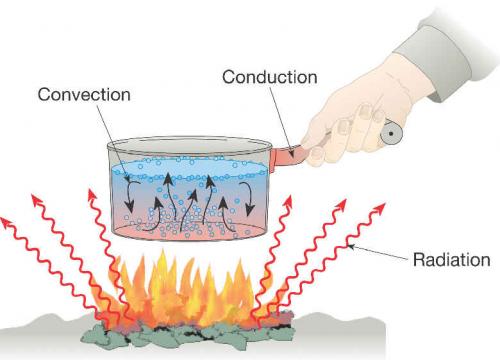We all know that Antarctica is a very cold place, and the scientists who work there are not the only ones who have to worry about staying warm. The animals that live in Antarctica have to protect themselves from the frigid conditions on a year-round basis. In order to keep heat they produce from escaping into the environment, these animals are typically well insulated.
Over the next several days to a few weeks leading up to and during our deployment to Antarctica, we'll be taking a look at how animals and humans stay warm in such harsh environments such as the Arctic and Antarctica. We'll also explore the methods of heat transfer as well as the science of warm weather clothing.
This is Part I in series of journal entries on 'The Science of Staying Warm.' Your thoughts and discussion questions are welcome.
Heat can be transferred in three ways:
- Conduction is the transfer of thermal energy through matter by direct contact of particles. During conduction, heated particles collide with each other and transfer their energy. Materials that transfer thermal energy well are called conductors (example: metals). Materials which do not transfer thermal energy well are called insulators (example: wood and plastic).
- Convection is the transfer of thermal energy by the movement of heated particles. During convection, the more energetic particles in a liquid or gas move from one location to another and carry their energy along with them. Liquids and gases move when we add heat because they become less dense and are able to rise. When the fluid rises, it carries its energy with it.
- Radiation is the transfer of thermal energy by electromagnetic waves. These waves can travel through space even when matter is not present. Electromagnetic waves include things like radio waves, microwaves, infrared radiation, visible light, ultraviolet radiation, X-rays, and gamma rays. All objects emit some type of radiation. Hotter objects emit shorter waves, while colder objects emit longer waves.

Heat transfer, also known as heat flow, heat exchange, or transfer of thermal energy is the movement of heat from one place to another. When an object is at a different temperature from its surroundings, heat transfer occurs so that the body and the surroundings reach the same temperature. Graphic - www.geography.hunter.cuny.edu.


Comments